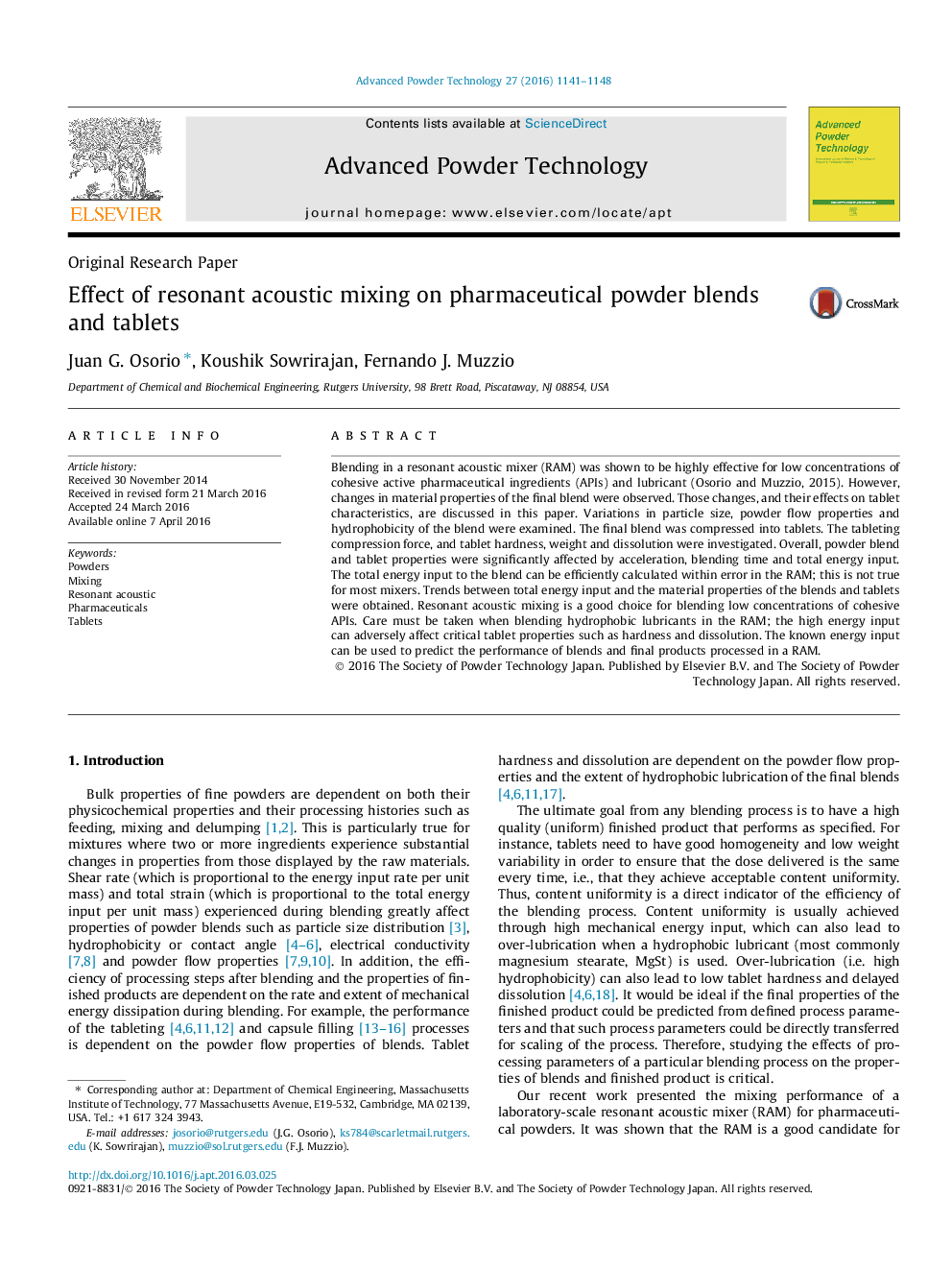| Article ID | Journal | Published Year | Pages | File Type |
|---|---|---|---|---|
| 143900 | Advanced Powder Technology | 2016 | 8 Pages |
•Total energy input can be used to predict the properties of blends and tablets.•The extent of lubrication can be controlled using the total energy input.•Resonant acoustic mixing is ideal for formulations containing cohesive powders.•Good content uniformity is reached in as low as 30 s of blending (at 8 kJ/kg).
Blending in a resonant acoustic mixer (RAM) was shown to be highly effective for low concentrations of cohesive active pharmaceutical ingredients (APIs) and lubricant (Osorio and Muzzio, 2015). However, changes in material properties of the final blend were observed. Those changes, and their effects on tablet characteristics, are discussed in this paper. Variations in particle size, powder flow properties and hydrophobicity of the blend were examined. The final blend was compressed into tablets. The tableting compression force, and tablet hardness, weight and dissolution were investigated. Overall, powder blend and tablet properties were significantly affected by acceleration, blending time and total energy input. The total energy input to the blend can be efficiently calculated within error in the RAM; this is not true for most mixers. Trends between total energy input and the material properties of the blends and tablets were obtained. Resonant acoustic mixing is a good choice for blending low concentrations of cohesive APIs. Care must be taken when blending hydrophobic lubricants in the RAM; the high energy input can adversely affect critical tablet properties such as hardness and dissolution. The known energy input can be used to predict the performance of blends and final products processed in a RAM.
Graphical abstractFigure optionsDownload full-size imageDownload as PowerPoint slide
